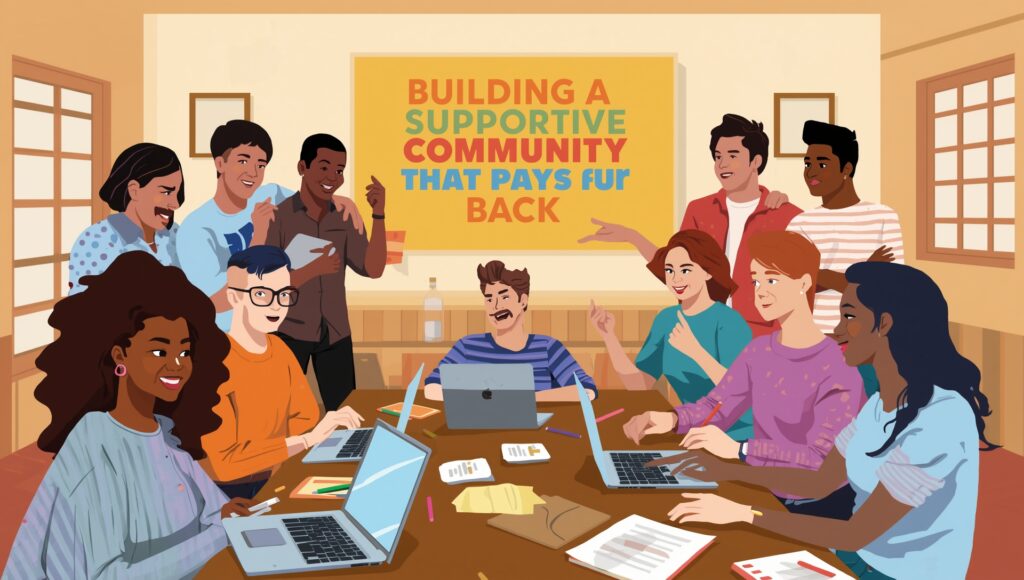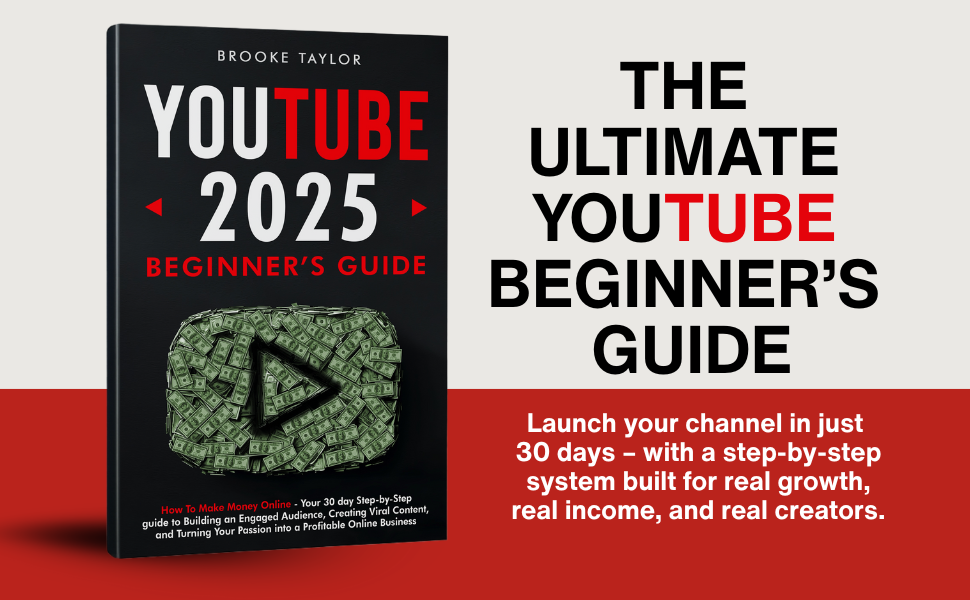How to Build a Supportive Community That Pays You Back
The Community That Almost Broke Me
When I first started building online communities, I thought success meant adding as many people as possible. I worked tirelessly to grow numbers, promote my group everywhere, and welcome anyone who wanted to join.
But here’s what happened: the group became overwhelming. The wrong members joined, the conversations went sideways, and instead of feeling energized, I felt drained.
That’s when I realized the truth: a supportive community is not about size—it’s about alignment. The right members will lift each other up, create momentum, and even help grow your business. And when you design it well, a supportive community not only fuels itself—it pays you back financially and emotionally.
In this post, I’ll share how I turned my scattered audience into a thriving, profitable community with the help of Skool.

Table of Contents
Why a Supportive Community Is a Game-Changer
A supportive community goes beyond likes and comments. It’s about:
- Connection – Members form genuine relationships.
- Accountability – People follow through because others are watching.
- Shared wins – When one person succeeds, everyone feels inspired.
- Collaboration – Members bring value to each other without you doing all the work.
Support creates sustainability. A community like this runs smoother, grows stronger, and keeps people coming back month after month.
Why Your Community Should Pay You Back
Let’s be real: building a community takes energy, time, and effort. If it doesn’t pay you back, burnout is inevitable. Here’s how a supportive community rewards you:
- Financially – Through membership fees, upsells, and referrals.
- Emotionally – You get encouragement and support from aligned members.
- Social proof – Your community becomes a case study for what you teach.
- Scalability – Recurring revenue gives you freedom to grow without stress.
That’s why I switched from free groups to paid membership communities. People who invest in themselves show up differently—and it changes everything.
Step 1: Define the Purpose of Your Community
A supportive community starts with clarity of purpose. Ask yourself:
- What transformation do I want members to achieve?
- Who exactly should be here (and who shouldn’t)?
- How will I keep the focus on outcomes, not distractions?
For example, my community isn’t “for entrepreneurs.” It’s for coaches and creators who want to build membership sites and monetize their knowledge. That clarity attracts the right people and repels the wrong ones.
Step 2: Choose the Right Platform
The platform you pick will either drain you or support you. I tried:
- Facebook Groups – Distracting and algorithm-controlled.
- Discord – Too chaotic, lacked structure for teaching.
- Kajabi/Circle – Too complex or expensive.
Then I found Skool, and it solved everything.
With Skool, I get:
- Community hub – Clean, simple, distraction-free.
- Classroom – Host my courses and onboarding content.
- Calendar – Run live events without confusion.
- Gamification – Points and levels that reward positive engagement.
Skool is designed for supportive communities that grow and last.
Step 3: Set Up the Right Structure
Structure creates safety and focus. Here’s how I built mine:
- Onboarding module in the classroom to get members started.
- Clear community rules pinned at the top.
- Weekly themes (e.g., wins on Monday, Q&A Wednesday, resource Friday).
- Engagement challenges that give people small wins.
When people know what to expect, they engage more freely and positively.
Step 4: Attract the Right Members
Not everyone belongs in your community. To build a supportive space, I:
- Use content marketing that speaks directly to my ideal members.
- Require an application or paid entry to filter out the wrong people.
- Share success stories so the right people see themselves in my members.
Paid access is the strongest filter of all. Free groups attract freebie seekers; paid groups attract action-takers.
Ready to set up your own? Start your Skool community here.
Step 5: Design for Engagement
Support doesn’t happen by accident—it’s designed. I use engagement systems like:
- Intro posts – Every new member shares who they are and their goals.
- Weekly prompts – Consistent questions spark consistent interaction.
- Recognition – Shouting out active members builds loyalty.
- Gamification – Skool levels make posting feel like progress.
These systems create momentum without me doing all the heavy lifting.
Step 6: Foster a Culture of Support
Culture is everything. I modeled the behavior I wanted to see:
- I celebrated wins publicly.
- I encouraged vulnerability and authenticity.
- I made sure feedback was constructive, never tearing people down.
- I showed up consistently until members started doing the same.
Now, members encourage each other daily—and that’s when a community truly becomes supportive.
Step 7: Monetize the Community
Here’s where the “pay you back” part comes in. I monetize my supportive community in three ways:
- Monthly membership fees – Recurring revenue keeps it sustainable.
- Upsells – Premium masterminds or coaching for those who want more.
- Affiliate opportunities – Members share tools and resources (like Skool).
Even with just 50 members paying $50/month, that’s $2,500/month. With 200 members, you’re at $10,000/month in recurring revenue.
You can start charging for access today: Set up your Skool membership here.
Step 8: Keep Members Engaged Long-Term
Retention is everything. A supportive community that pays you back isn’t built on churn—it’s built on loyalty.
Here’s how I keep people engaged:
- Live calls scheduled through Skool’s calendar.
- Fresh content drops in the classroom.
- Member spotlights to showcase progress.
- Seasonal challenges to keep momentum alive.
Members stay when they feel seen, supported, and valued.
Step 9: Scale Without Losing Support
As my community grew, I worried support would water down. But scaling doesn’t mean losing intimacy. Here’s what I did:
- Created tiers (beginner, advanced, VIP).
- Promoted leaders and moderators from within the group.
- Maintained a clear mission so culture stayed intact.
Supportive communities scale because members start supporting each other—so you don’t have to do everything yourself.
Why Skool Is the Best Platform for a Supportive, Profitable Community
Skool makes it possible to build a supportive community that pays you back because:
- It keeps everything simple—community, courses, and events in one place.
- It rewards positive engagement automatically.
- It makes monetization seamless with built-in payment systems.
- It attracts people who want to learn, grow, and contribute.
I’ve tried everything else, and nothing compares.
If you’re serious about building a supportive, profitable community, start with Skool: Sign up here.
FAQs About Supportive Communities
1. How big does my community need to be?
Even 20–30 engaged members can create massive value.
2. Should I start free or paid?
Paid is better if you want commitment and support.
3. How do I keep the culture positive?
Set the tone early with rules, recognition, and modeling behavior.
4. Can I run courses inside the same platform?
Yes—Skool lets you combine courses, coaching, and community.
Conclusion: Build a Community That Supports You Too
A supportive community isn’t just about helping others—it’s about creating a system that helps you as well. When your members are aligned, engaged, and paying for access, your community gives back as much as you put in.
For me, the breakthrough came with Skool. It simplified the process, amplified engagement, and made it profitable.
If you’re ready to build a supportive community that pays you back, take the first step now: Sign up for Skool here.







